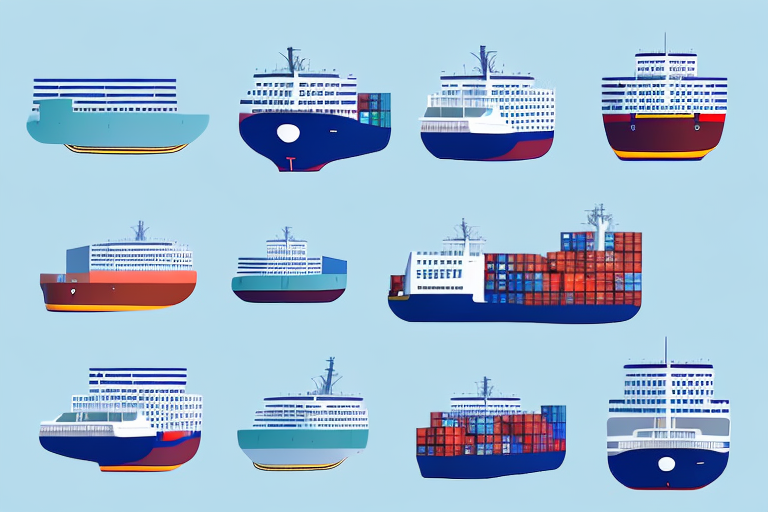Optimizing Your Supply Chain with LCL (Less than Container Load) Shipping
In the global trade industry, managing your supply chain is crucial for ensuring the timely delivery of goods and services to your customers. Businesses continuously seek ways to enhance their supply chain management processes, particularly by optimizing their shipping strategies. One such strategy that has gained prominence in recent years is Less than Container Load (LCL) shipping. This article provides an in-depth exploration of LCL shipping, including its benefits, considerations, and best practices for integrating it into your supply chain.
Understanding the Basics of LCL Shipping
LCL shipping is a method where your cargo is consolidated with shipments from other exporters in a shared container. Unlike Full Container Load (FCL) shipping, where a single shipper utilizes an entire container, LCL allows multiple shippers to share the shipping costs. This makes LCL shipping an ideal option for businesses that do not have sufficient cargo to fill an entire container.
When you choose LCL shipping, your goods are loaded into a specially designed LCL container, typically owned by the shipping company. These containers are smaller than FCL containers and are engineered to accommodate multiple shipments. Once the container reaches capacity, it is transported to the port and loaded onto the carrier's vessel.
One significant advantage of LCL shipping is the ability to ship smaller quantities of goods more frequently, helping maintain a steady supply chain. Additionally, LCL shipping can be more cost-effective than FCL shipping, particularly for businesses with limited cargo volume.
However, LCL shipping also has its drawbacks. For instance, cargo may experience delays if other shippers' goods are not ready on time. There is also an increased risk of damage or loss if shipments are not properly packed or secured. It is essential to weigh the pros and cons of LCL shipping to determine if it aligns with your business needs.
The Benefits of Using LCL Shipping for Your Supply Chain
One of the primary benefits of LCL shipping is the potential for significant cost savings on transportation. By sharing shipping costs with other exporters, businesses can reduce their overall freight expenses. According to a report by the ShipScience Industry Report, companies can save up to 40% on shipping costs by opting for LCL over FCL.
LCL shipping also enhances inventory management efficiency. Instead of waiting to accumulate enough goods to fill a container, businesses can ship smaller quantities as needed. This approach minimizes the risk of stockouts and prevents excess inventory buildup, leading to better cash flow management.
Moreover, LCL shipping provides businesses with the flexibility to explore new markets. By sending smaller shipments to various destinations, companies can test market viability without committing to large-scale shipments. This strategy is particularly beneficial for businesses aiming to expand their global footprint without significant upfront investment.
Additionally, LCL shipping contributes to reducing your carbon footprint. Sharing container space reduces the number of containers required for transportation, thereby lowering overall carbon emissions. This aligns with the growing emphasis on sustainability within the global supply chain industry.
How LCL Shipping Can Help You Save Money on Transportation Costs
LCL shipping offers several advantages that can lead to substantial savings on transportation costs:
- Cost Efficiency: You only pay for the space your goods occupy in the container, making it cost-effective for smaller shipments.
- Shared Costs: By sharing container space with other exporters, you can significantly reduce your overall shipping expenses.
- Multiple Destinations: Consolidating cargo into an LCL container allows you to split shipping costs when shipping to multiple destinations.
Furthermore, LCL shipping provides greater flexibility compared to other shipping methods. Businesses can ship smaller quantities more frequently, improving inventory management and meeting customer demand promptly. This flexibility is especially beneficial for companies with limited storage space or those needing to restock inventory quickly.
Environmental benefits also contribute to cost savings. By reducing the number of containers required for shipping, LCL shipping helps lower carbon emissions and decrease the use of packaging materials, further reducing operational costs.
Factors to Consider When Choosing LCL Shipping as a Transportation Mode
Before opting for LCL shipping, consider the following factors:
- Delivery Time: LCL shipping can be slower than FCL shipping due to multiple stops for cargo consolidation and deconsolidation.
- Security: Sharing a container with other shipments may increase the risk of damage or loss if cargo is not adequately secured.
- Handling Costs: Additional handling is required for LCL shipments, which can result in higher handling costs compared to FCL.
Despite these considerations, LCL shipping remains a cost-effective option for small to medium-sized businesses lacking sufficient cargo volume for FCL. The ability to ship smaller quantities more frequently provides enhanced flexibility and can lead to improved supply chain responsiveness.
How LCL Shipping Can Help You Manage Inventory More Efficiently
LCL shipping facilitates efficient inventory management by allowing businesses to receive goods as needed rather than waiting to fill an entire container. This approach reduces lead times, improves delivery schedules, and enhances customer satisfaction. According to the ShipScience Market Analysis, companies using LCL shipping report a 25% improvement in inventory turnover rates.
By minimizing the risk of stockouts and preventing excess inventory accumulation, LCL shipping helps businesses maintain optimal inventory levels, leading to better financial performance and reduced storage costs.
Best Practices for Managing Your Supply Chain with LCL Shipping
To effectively manage your supply chain with LCL shipping, consider the following best practices:
- Choose a Reliable Freight Forwarder: Select a freight forwarder with extensive experience in LCL shipping to ensure smooth operations.
- Understand Shipping Schedules: Collaborate with your freight forwarder to comprehend shipping schedules and transit times, ensuring timely deliveries.
- Effective Communication: Maintain clear communication with suppliers and customers regarding shipping schedules to facilitate coordinated planning.
- Track Shipments: Utilize tracking systems to monitor your shipments' progress, ensuring they arrive on time and in good condition.
The Role of Freight Forwarders in Optimizing Your Supply Chain with LCL Shipping
Freight forwarders play a pivotal role in optimizing supply chains through LCL shipping. They manage the complexities of LCL logistics, including documentation, customs clearance, and cargo consolidation. An experienced freight forwarder can negotiate favorable shipping rates and transit times, providing cost-effective solutions tailored to your business needs.
Moreover, freight forwarders offer valuable insights into market trends and regulatory changes, helping businesses adapt their shipping strategies accordingly. By leveraging the expertise of a freight forwarder, companies can ensure that their LCL shipments are handled efficiently and reach their destinations promptly.
How to Choose the Right Freight Forwarder for Your LCL Shipping Needs
Selecting the right freight forwarder is crucial for successful LCL shipping. Consider the following when making your choice:
- Experience in LCL Shipping: Ensure the freight forwarder has a proven track record in managing LCL shipments.
- Comprehensive Logistics Services: Look for forwarders that offer end-to-end logistics solutions, including customs clearance, warehousing, and transportation.
- Extensive Network: A freight forwarder with a broad network of shipping companies can provide competitive rates and diverse shipping options.
- Reputation and Reliability: Research the freight forwarder's reputation through reviews, testimonials, and industry certifications.
Common Mistakes to Avoid When Using LCL Shipping in Your Supply Chain
When integrating LCL shipping into your supply chain, avoid these common mistakes:
- Poor Communication: Failing to communicate effectively with freight forwarders, suppliers, and customers can lead to delays and misunderstandings.
- Improper Cargo Preparation: Inadequately preparing cargo for shipping increases the risk of damage or loss during transit.
- Neglecting Shipment Tracking: Not monitoring your shipments can result in unexpected delays and disruptions in your supply chain.
To prevent these issues, establish a clear shipping plan, maintain open lines of communication with all stakeholders, and utilize shipment tracking tools to monitor progress.
Case Studies: Companies that Have Successfully Implemented LCL Shipping in Their Supply Chains
Several companies have effectively integrated LCL shipping into their supply chains, resulting in improved efficiency and cost savings. For example, TechGear Inc., a global electronics manufacturer, reduced its transportation costs by 30% through LCL shipping and enhanced its inventory management processes. By receiving goods more frequently, TechGear Inc. was able to respond swiftly to fluctuations in customer demand.
Similarly, EcoHome Products, a leading consumer goods provider, optimized its shipping routes using LCL shipping. This optimization led to a 20% reduction in lead times and significantly boosted customer satisfaction due to faster delivery times.
These case studies demonstrate how LCL shipping can be a strategic component in streamlining supply chain operations and achieving business objectives.
The Future of LCL Shipping and Its Impact on the Global Supply Chain Industry
Looking ahead, LCL shipping is set to play an increasingly vital role in the global supply chain industry. The continued growth of e-commerce demands more flexible and cost-effective shipping solutions, positioning LCL shipping as a preferred option for many businesses. Additionally, advancements in technology, such as blockchain and artificial intelligence, are expected to enhance the security and efficiency of LCL shipping processes.
According to the ShipScience Industry Trends Report, the LCL market is projected to grow by 12% annually over the next five years, driven by increased demand for customizable shipping solutions and sustainable logistics practices.
As global trade evolves, LCL shipping will continue to be a critical tool for businesses aiming to remain competitive and meet the dynamic demands of their customers. Embracing LCL shipping can lead to more resilient and adaptable supply chains, positioning businesses for long-term success in the ever-changing global marketplace.
In conclusion, LCL shipping offers numerous benefits for businesses looking to optimize their supply chain management processes. By partnering with a reliable freight forwarder and adhering to best practices, companies can leverage the cost savings and efficiency gains provided by LCL shipping. As the global trade landscape advances, LCL shipping will remain an essential component for businesses striving to stay competitive and fulfill their customers' needs effectively.






















